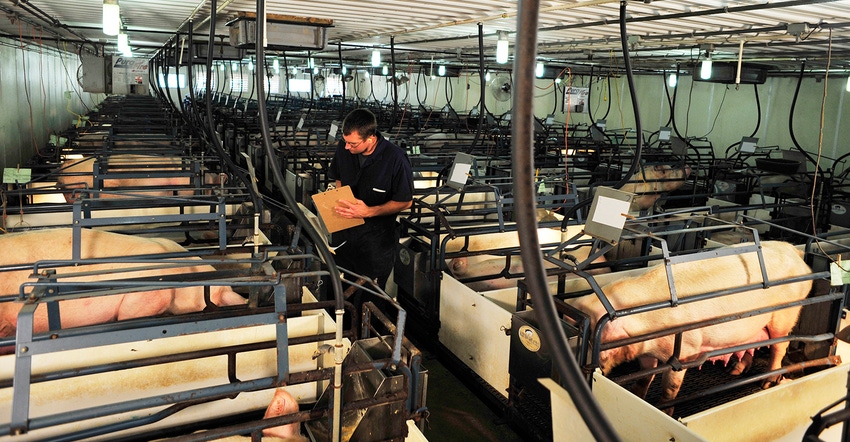There are a number of strategies that can help the farrowing team focus on acclimating gilts to their new environment and getting them comfortable.
April 18, 2023

Increasing piglet survivability and combating sow and gilt mortality requires consistent and systematic production team processes. One thing producers can do is to introduce a consistent choring protocol in their farrowing houses. These protocols should include tandem monitoring for day one care, ensuring all sows have feed and water consistently, warming newborns as needed, split suckling full-bellied piglets as appropriate, and evaluating sows for further needed care.
Did the sow have a difficult time farrowing overnight? Were there any complications? Does she need to be flagged for follow-up treatment? This monitoring system helps give focus to the farrowing team and allows critical observations from overnight farrowing to be addressed in a timely manner when the team arrives on-farm.
There are a number of strategies that can also help the farrowing team focus on acclimating gilts to their new environment and getting them comfortable so they don't have added stressors during their first farrowing. This dedicated approach to gilt training can help teams ensure they are setting up the farrowing process for success.
Gilt training considerations
Placement. Intentionally place the gilts together in the farrowing rooms. Draw attention to them by centering them in the room, so they are the first rows observed when you walk into each farrowing room. Gilts are typically grouped together in gestation, with the gilts either together in a gestation pen or in the same place in the gestation snake. It is an easy transition for team members loading the farrowing rooms to place them together. Strategic loading helps monitors easily identify them and be on guard for farrowing complications and ensure the gilts are learning where feed and water are located.
Mixing water and feed. Making sure new moms eat and drink up to, and soon after, birth is important for their health, and their piglets' health. Have garden hoses available in farrowing rooms and add water to the bottom of gilt feeders. Usually, this is only needed for the first three to five days, targeting the time it takes to get the room farrowed out. This helps gilts transition to dry feed in the farrowing house more quickly. They are often used to wet feed in gestation water troughs and wet/dry feeders in a gilt developer unit.
Learning with peanut butter. Since water intake is critical to avoid constipation, a small bribe may be used to help build gilts' comfort with finding and drinking from the water nipple — with peanut butter. Dab some on her water nipple in the morning, and make sure your monitors are identifying it if the peanut butter is still there later in the day — indicating that she hasn't found her water source.
A good first experience. Team members should also manually press each water nipple to ensure good flow. Be strict with your expectations on water flow and how strong it should be. If the pressure is set too high and the gilt is sprayed in the face, they can build an aversion to it. A simple test is taking a cup or bottle and providing an appropriate time for that to be filled completely or to a line on a standard bottle.
Keep them moving
Pre-farrow sows are fed twice per day. Research has shown this has positive effects on lactation and helps to get them up and active at least twice in the day. This also encourages their water intake, and can be influential with water training your gilts as well.
Keeping sows active extends past feeding time. When a gilt or sow is identified as an at-risk animal, and showing signs of going off feed or water or another complication, consider letting her out of her crate and walking her around the farrowing room. Typically, this loosens things up, often they will urinate and defecate and continue on the pathway right back into their crate. This takes a few additional minutes for caretakers, but with some extra care and attention up front, you will have fewer animals to come back and treat for post-farrowing complications.
Final thoughts
Piglets are often the shining stars of the farrowing house. However, it is important to challenge your farrowing teams to treat the sow and the piglets individually for their unified success. Understanding the factors that set sows and gilts up for success are equally as important. You could say they go together like peanut butter and jelly… or gilts and peanut butter.
Carthage Veterinary Service relies on science and experience to provide unique and practical solutions to achieve the best outcomes for producers and their animals.
You May Also Like



